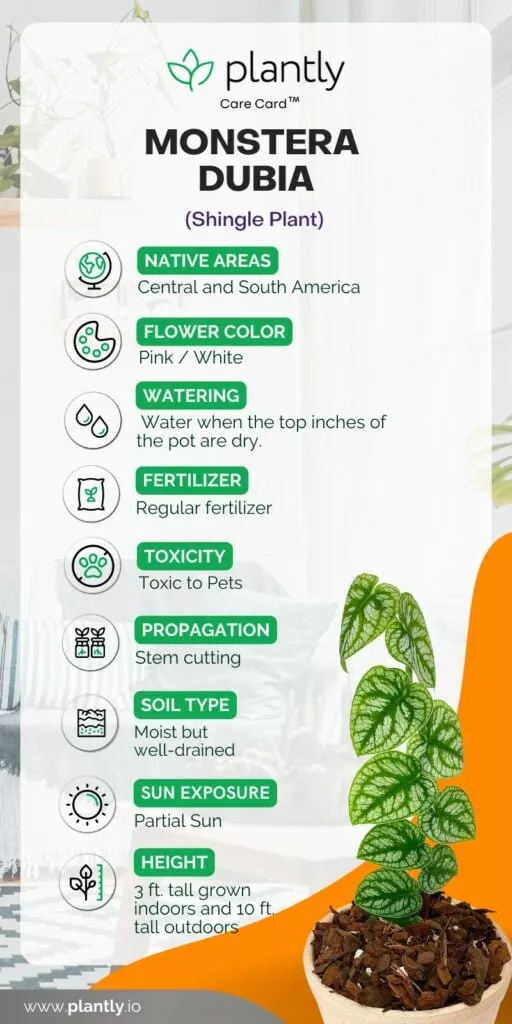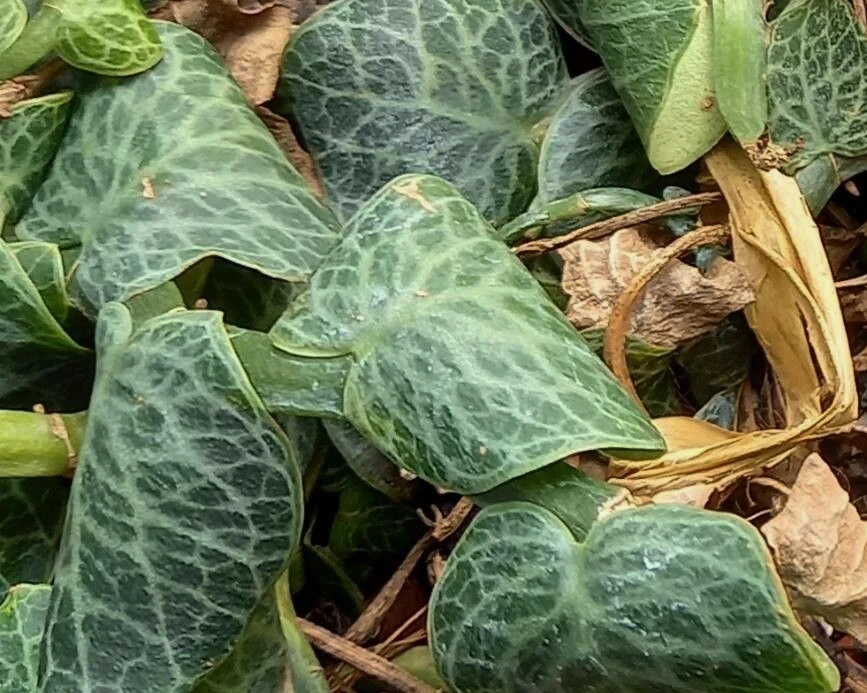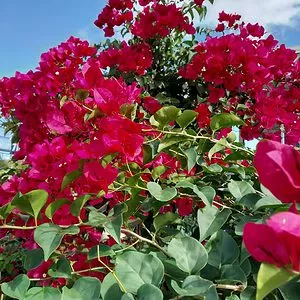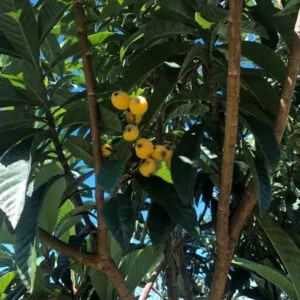No products in the cart.
Table of Contents
The ever-changing vine is something you will love to watch climbing up a post gracefully and seems to grow forever.
One of the lesser-known Monstera varieties is the Monstera Dubia vine climber. The plant, when in your garden or on the patio, is beautiful with a unique appearance. It is smaller and makes for a lovely addition to any houseplant lover’s collection. However, how do you care for this plant if you have decided to add it to your assortment?
Plantly is going to provide you with all the insights into caring for this unique plant right here.
Monstera Dubia is a rare species with elegant variegation and a fascinating growth pattern. For this reason, if you want to add a beautiful plant to your houseplant collection, this one is sure to please you.
The plant originates from Central and South America, this epiphyte monster known as the creeping vine climbs large plants and trees. The plant has leaves in a light and dark green lying flat against anything it grows.
The tropical is referred to as the shingle plant, and they are relatively easy to care for.
Monstera Dubia Classification
Monstera Dubia Plant Care Basics
You are thinking about getting this tropic plant and thinking about how to care for it to ensure it thrives in your yard. Here is a breakdown of how you can maintain your shingle plant.
Best Potting Mix
Monstera Dubia thrives on loose yet moist but still well-drained potting mixes. Make sure the potting has a lot of organic matter comprising chunky soil made for aroids. You can create this easily by mixing equal parts peat moss, orchid bark, coco coir, and perlite.
The ground is rich in organic matter and loose to retain water without logging it. Try not to use plain soil mix, as it is too dense and will suffocate the plant’s roots.
Watering Needs
Only water your Monstera Dubia once you find the top inches of the potting are dry. When watering, make sure the water drains well from the pot. While the plant can tolerate slight neglect of water and does not die when the soil is dry, it’s best to not let them dehydrate too much.
Ideal Lighting
When in its native habitat, the shingle plant grows below the forest canopy and receives dappled sunlight throughout the day. For this reason, it helps to expose them to bright indirect light when you plan to grow them indoors. Try not to expose them to direct sunlight for too long as it burns the young plant and leaves.
Humidity & Temperature
The plant is native to the tropical rainforest and flourishes in humid and warm environments. Inside the home, humidity and temperature levels are fine but never place it near a window or a cooling/heating vent. Is your home arid? Then it’s best to provide your indoor plants with some added humidity.
One sign that the Monstera Dubia needs more humidity is when the leaves curl off and develop crispy edges. To help add more humidity, you can place a pebble tray under your plant or use a humidifier nearby.
Fertilizer
This aroid is a medium feeder that appreciates a regular fertilizer. You can use a slow-release fertilizer at least three times a year. You can also use a low-strength fertilizer once during the Monstera Dubia growing period to encourage growth.
Propagation
Monstera Dubia propagation you can do through stem cutting used for propagating other Monsteras as well. First, you need to cut the stem below the node. Place the new cutting in water with the branch and node submerged with the leaves above the water.
Place it in bright yet indirect light and wait until the roots are an inch long. It can take a couple of weeks to happen. Once it has a root system, you can transfer it to your chunky soil mix and keep it moist for the first couple of weeks.
Growth Zone
In the USDA, the growth zones are 9b to 11 and are ideal for growing your Monstera Dubia plant outdoors. While other zones such as 4a to 11 work better to grow your plant on the patio.
Potting and Repotting
When you want to plant your Monstera Dubia seeds, preferably plant them in a big and deep pot with enough draining holes. As the plant is root-bound, a small vessel can affect its health and growth. Look for a container that is at least 20 inches in diameter with a depth of 10 inches for a start.
One thing to note is that the shingle plant does not like too much repotting unless it is root-bound. You will notice the roots growing through the drainage holes, or it looks bigger than the pot. You may also see Monstera Dubia fenestration and expected as the leaves split, allowing water to interact with the roots.
Alternatively, you can maintain the plant by doing some Monstera Dubia cutting. To do this, you can trim the vine as it helps keep your plant’s size and health. Furthermore, you can remove old leaves that look unhealthy.
Monstera Dubia Similar Plant
When seeking a Monstera Dubia form, the decision can be challenging due to limited options. Among the choices that closely resemble Dubia’s form, Rhaphidophora Cryptantha emerges as the nearest plant, making it a viable alternative to consider.
Rhaphidophora cryptantha, also known as the Shingle plant, showcases stunning silvery blue-green, heart-shaped leaves that cling to tree trunks, like a tree hugger. As a climbing or shingling aroid plant, it displays distinctive silver nerves running through its leaves, enhancing its foliage perfection.
Cyptantha is also considered a rare plant that every plant enthusiast wants to have
Monstera Dubia Diseases & Pests
When growing your Monstera Dubia, one common problem is root rot which occurs when you do not water the plant correctly. It can also happen when the soil is overly compact and waterlogs the root. For this reason, it helps to provide your plant with a loose and chunky potting mix.
Furthermore, they are susceptible to red spider mites and brown scales. Both these pests are sap-sucking, and best to inspect your plant regularly for infestations. You can treat these pests with Neem oil or use some rubbing alcohol spray on the affected areas.
For scale insects, you need to remove them manually using a cotton swab with rubbing alcohol.
Frequently Asked Questions
Buying a Monstera Dubia seed or plant is expensive as it is a rare plant. Depending on the variegation pattern and size, a Monstera price can range very high for this reason.
When your Monstera is happy, it has bright and green healthy foliage. When the leaves curl or turn yellow, it shows signs of distress caused by improper soil moisture.
Your plant will have droopy leaves with white spots, and now new growth is starting to wilt. The first sign that your plant is sick is dying leaves.
Monstera dubia is known for its relatively slow growth compared to other Monstera species. It typically grows at a moderate pace, producing new leaves periodically rather than rapidly.
Monstera dubia can be considered moderately challenging to grow compared to some other Monstera species. While it is not excessively difficult, it does have specific care requirements that need to be met for successful growth.
Monstera dubia thrives in warm temperatures ranging from 65°F to 85°F (18°C to 29°C). It prefers to be in a relatively warm environment to promote healthy growth.
Whether you want to buy, sell, or simply reach out to other plant enthusiasts, Plantly is the right place to be!
- $9.99Sold By: Succulent Oasis
In stock
Medium Succulent Plant – Agavoides Pulidonis
Only 5 available and it’s in 1 people’s basketRated 4.84 out of 5 based on 352 customer ratings02Sold By: Succulent Oasis - Free Shipping$40.99Sold By: Gar-Zen Botanical Design
In stock (can be backordered)
Red San Diego Bougainvillea 1 Gal. Vine Ships Free
Rated 4.86 out of 5 based on 49 customer ratings00Sold By: Gar-Zen Botanical Design - Free Shipping$20.24 – $44.99Sold By: Carlo's Plant Farm
In stock
10 LOQUAT SEEDS
Rated 5.00 out of 5 based on 22 customer ratings00Sold By: Carlo's Plant Farm -








